Insulation products play an important role in providing comfort to your home and reducing your overall energy bills. While the walls and ceiling insulation are the first areas most homeowners think of, underfloor insulation is often a forgotten element in the process. In this article, we’re getting in on the ground floor when it comes to insulating your floors, giving a complete guide to underfloor insulation, the role it plays in your home and why it’s an important feature in any home.
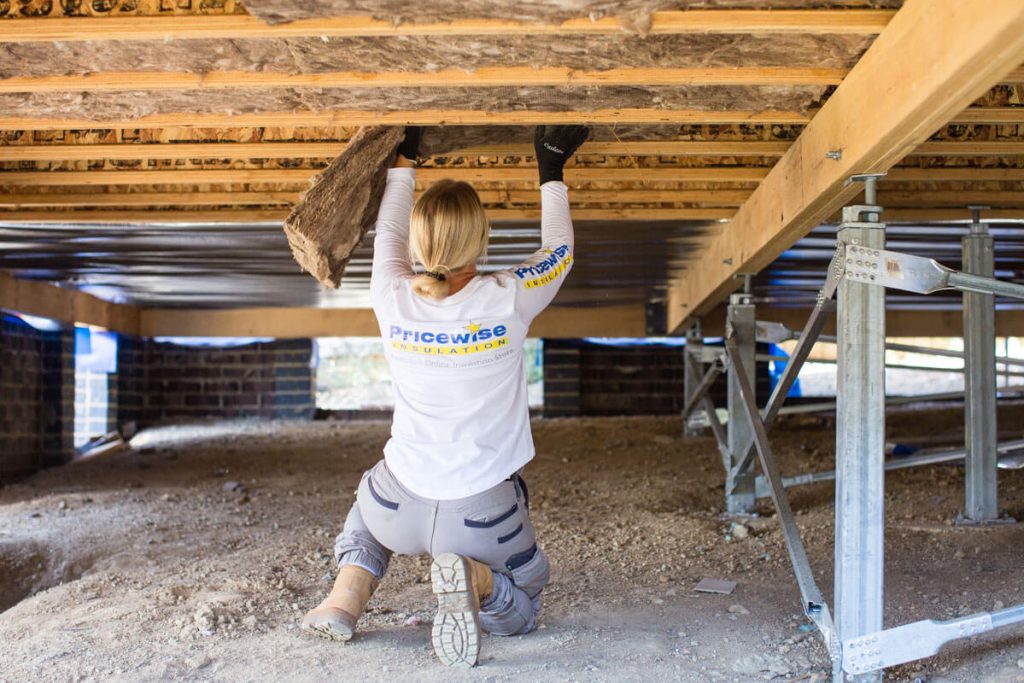
What is underfloor insulation?
Underfloor insulation works in the same way as other forms of insulation products, such as those installed in your wall or ceiling. A barrier is created to control the flow of heat coming in and out of your home. The insulation helps reduce your reliance on air-conditioning and heaters and helps you cut down on your electricity bills.
Is underfloor insulation important in a home?
Yes. Quality insulation properly installed will make a noticeable difference to your home’s overall thermal performance and reduce your need for air-con and heating. Even if you have ceiling insulation and insulated walls, ignoring the floor insulation creates a large area for heat loss and air draughts. This means the thermal performance of your home will be less consistent and you’ll end up using your heating or air-con more often to compensate.
Australia is a country of extreme temperatures so there will be some chilly nights or summer schorchers where you’ll be making the most of your air-conditioner. However, once you’ve reached your desired temperature, insulation will help your home maintain this for longer.

How does underfloor insulation work?
Underfloor insulation products work by creating a barrier within your suspended timber floors which helps prevent heat loss during winter and hot air draughts from entering during summer. It creates a shield against air flow. If you’re in a pre-existing home without floor insulation, you’ll be surprised by how much of a difference it really makes.
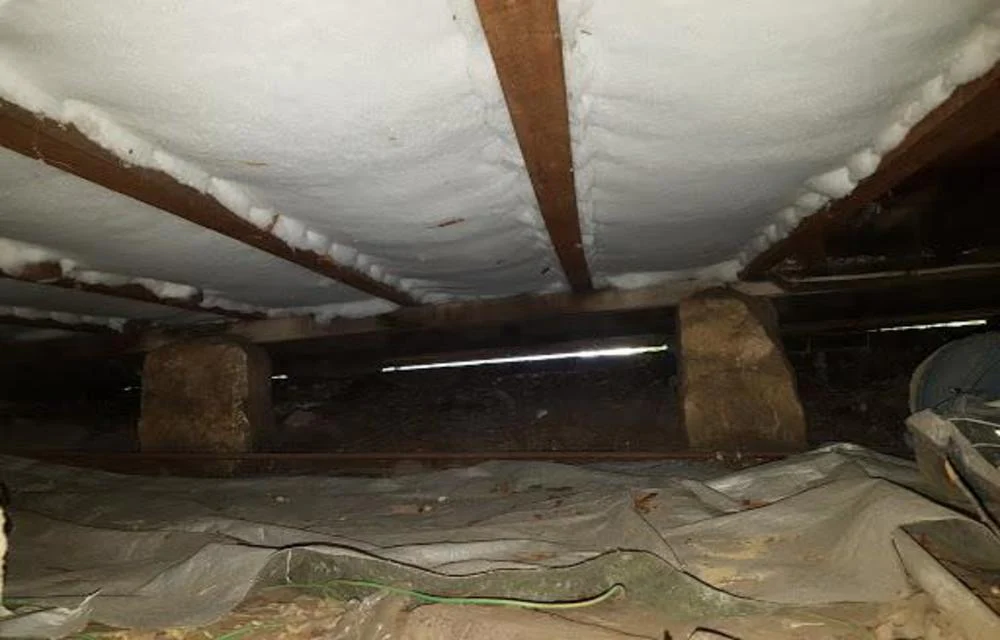
The Benefits of Underfloor Insulation in a New Home Build
Thermal Comfort
Anyone who’s been in a hot house during a Queensland summer will tell you the importance of thermal comfort. Insulation helps your home remain at a comfortable temperature during a wider range of climate conditions. When you do use air-con or heating, it’ll help your house maintain the desired temperature once you reach it.

Energy Efficiency
Insulation plays an important role in reducing your energy costs. Not only does insulating your home helps keep your home at a comfortable temperature more often, but it’ll also help retain the effects of your artificial heating or cooling.

Moisture Control
Insulation creates a vapour barrier which reduces the amount of excess moisture in your home. A little water doesn’t sound threatening, but it can cause major issues like dampness, water damage, mould and in extreme cases, structural damage. All of these issues are a pain in the neck to fix (not to mention pricey), so anything you can do to avoid it is worth it.

Sound insulation
An added bonus of insulation is it helps soundproof your home. Whether it’s footsteps upstairs or your neighbours getting a little too graphic about their last doctor’s appointment, sound insulation will help reduce noise travelling both from within and outside your home.

Increase the Value of your Home
For all the above reasons, insulation can add value to your home. Anything that makes a house easier to maintain, more comfortable and/or cheaper to use can be a big selling point.

What type of underfloor insulation should you use?

Types of Underfloor Insulation Materials
When it comes to floor insulation, four main types are used. Remember, like any product, within each of these categories, quality products vary. For example, more expensive polyester rolls will most likely provide better insulation. They’re as follows:
Fiberglass Insulation/ Glasswool Underfloor insulation batts
Glasswool batts rely on billions of tiny air pockets within the material to slow down any heat loss from your home. A cost-effective option, glass wool is usually made from recycled glass materials. When being installed, glass wool batts are pre-cut to fit between floor joists and are either stapled or strapped into place.

Expanded Polystyrene Foam Board Insulation
Expanded polystyrene (XPS) is another option that creates a thermal barrier and reduces your heat loss. XPS has a dense closed structure that creates comprehensive strength and excellent waterproofing. It can be used in multiple layers to increase insulation. XPS is an effective choice for concrete floors, however, you need to install it before you pour the concrete (it’s much easier than doing it the other way around).
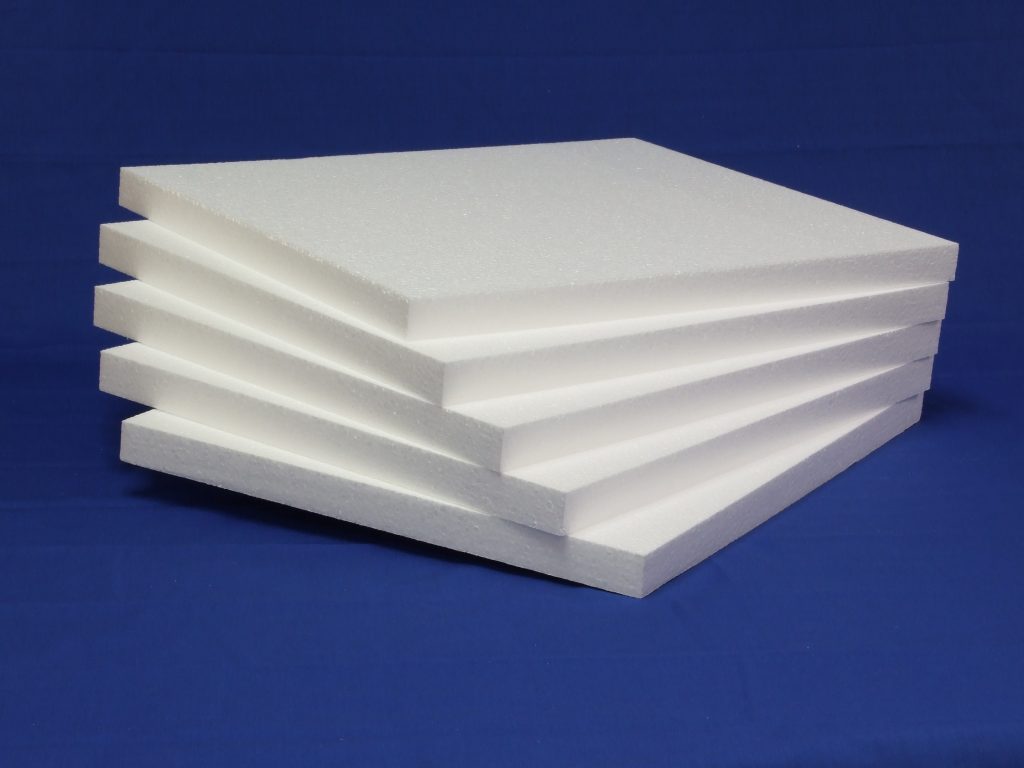
Foilboard Insulation
A foilboard is a rigid insulation panel that is often used in underfloor insulation, as well as in walls and in ceilings. The expanded polystyrene core is fire retardant and the panels have aluminium coating on each side. The foilboard is easy to install and safe to handle, making it ideal for a DIY project.
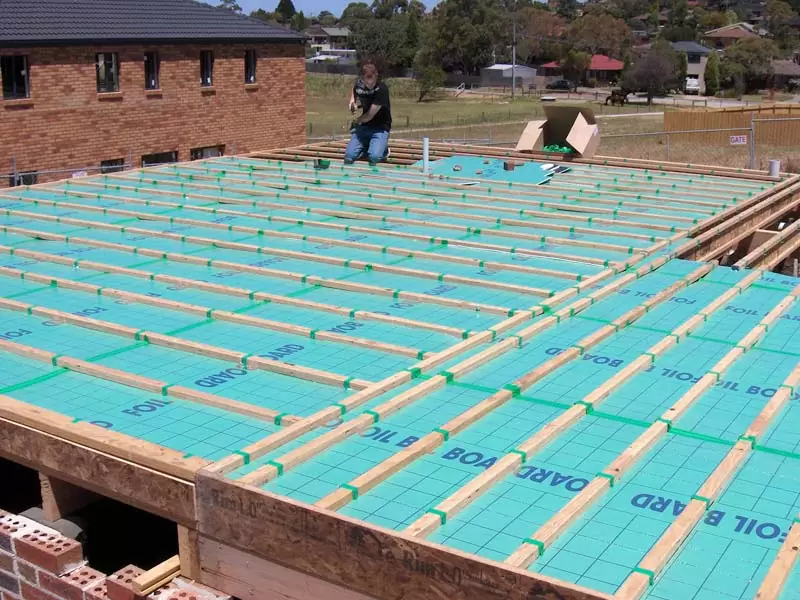
Polyester Rolls
Polyester rolls are a type of bulk insulation that can be used throughout the home, including your floor. Primarily made from recycled plastic materials, quality polyester rolls are easy to handle and contain no breathable fibres. If you’re considering installing insulation yourself, this is a safer and easier option.
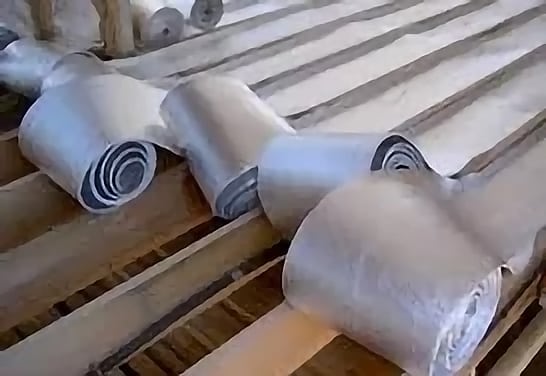
How to install underfloor insulation
The difficulty of installing insulation can vary depending on the material you’re using, your home design, and your level of expertise. The biggest mistake made by DIY installers is they leave air gaps between panels. This reduces the effectiveness of blocking air and can potentially lead to moisture issues down the line. If you’re unsure, you don’t need to perform the installation process yourself. An experienced installer can take care of your floor insulation installation for you.
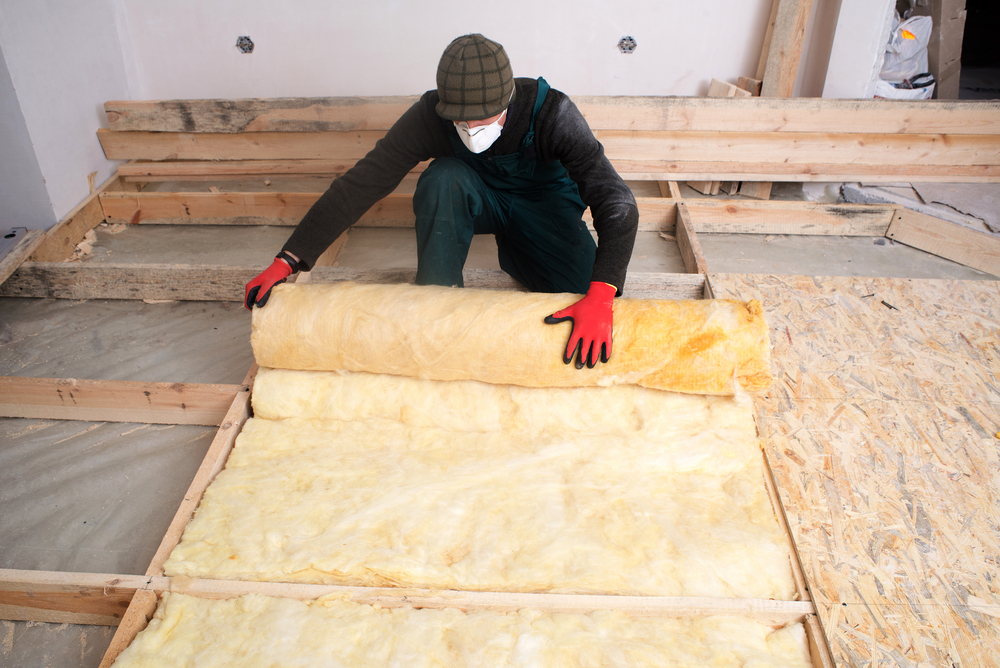
Key Considerations and tips for underfloor insulation
R-Value Requirements
R-Value is a unit used to measure and compare insulating properties in various materials including insulation. The higher the R/Value the better thermal resistance a product will provide. So, clearly you should run out and buy the highest r value rated insulation you can find, right? Not necessarily.
In Queensland, too high of a r value will retain your home’s heat but it will make it difficult to keep your home cool in the summer. In other words, the insulation will work too well and keep your home warmer than you want.
A good r value for most Brisbane homes is somewhere in-between R 2 – R 4.1. In any region, it’s usually recommended for your floor insulation to be ranked at least a 2.

Vapor Barrier Considerations
A vapour barrier is a material designed to prevent moisture from penetrating through your construction. Excess moisture can cause serious problems, such as wood rot, water damage, and mould. Some insulation has a vapour barrier already installed while with others you’ll need to install a vapour barrier over the top.
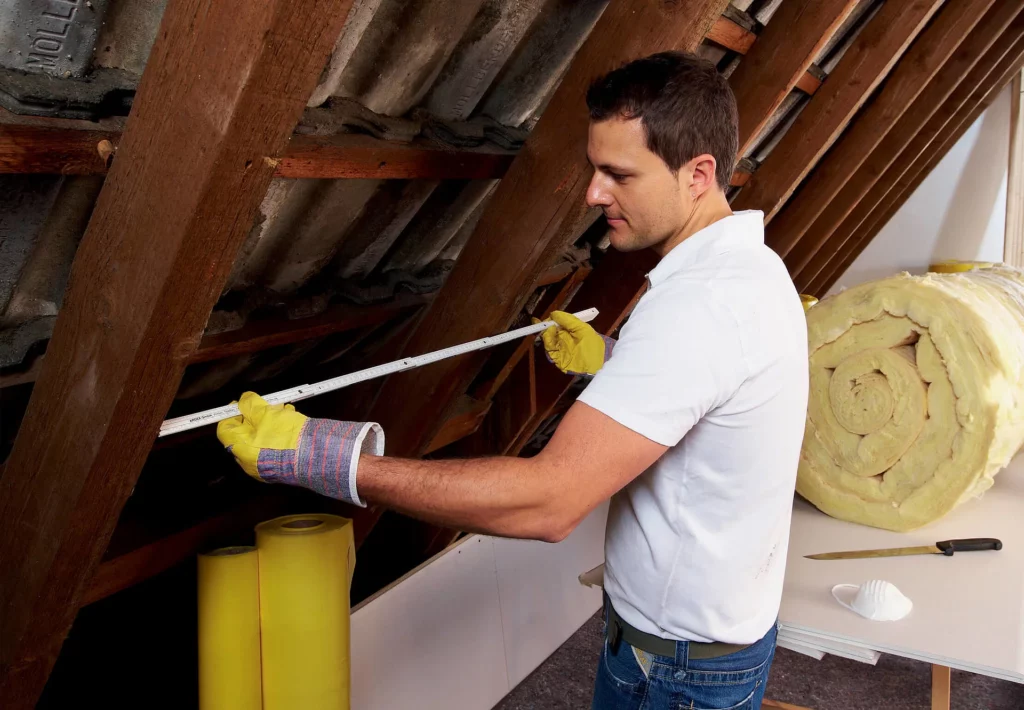
Underfloor insulation upkeep and maintenance
Like anything, insulation will begin to deteriorate over time, however, proper maintenance and upkeep can help your insulation last longer. It’ll also provide you with an idea of when it may be time to replace your insulation. Some simple steps you can perform to make sure your insulation is okay are:
- Regular Inspections
- Search for signs of Damage or Deterioration
- Address Any Issues Promptly to Maintain Insulation Effectiveness
- Upgrade or replace when needed.
- Maintain good ventilation in your home.

How much should you budget for your underfloor insulation?
The Initial Investment of underfloor insulation
The initial cost of materials can vary depending on where and who you’re purchasing from. Underfloor insulation products can be found at any major hardware store (Bunnings, Mitre 10, etc).
Below is a rough guide to prices, with the average installation job costing around $1,000-$2,000.
Foil Insulation: $3-$10 per square meter
Glasswool batts: $8-$10 per square meter
Polyester batts: $15-$20 per square meter
Rigid Panels: $10-$23 per square meter
Factor in the Potential Energy Savings Over Time
With any feature in your home, you need to weigh up the initial investment with the long-term benefits. Insulation can help reduce your energy bills which could be hundreds of dollars over time. Cheaper, poor-quality products will not only be more likely to leak hot air, but they’ll also be more susceptible to damage and have a shorter lifespan. A shorter lifespan means a re-installation and the costs and hassles that come with this.

Floor insulation is a great addition to any home
Floor insulation plays an essential role in the thermal comfort of your home. By insulating your floor along with your walls and ceiling, you provide your home with a complete barrier to minimise heat loss and reduce your overall energy costs.



0 Comments